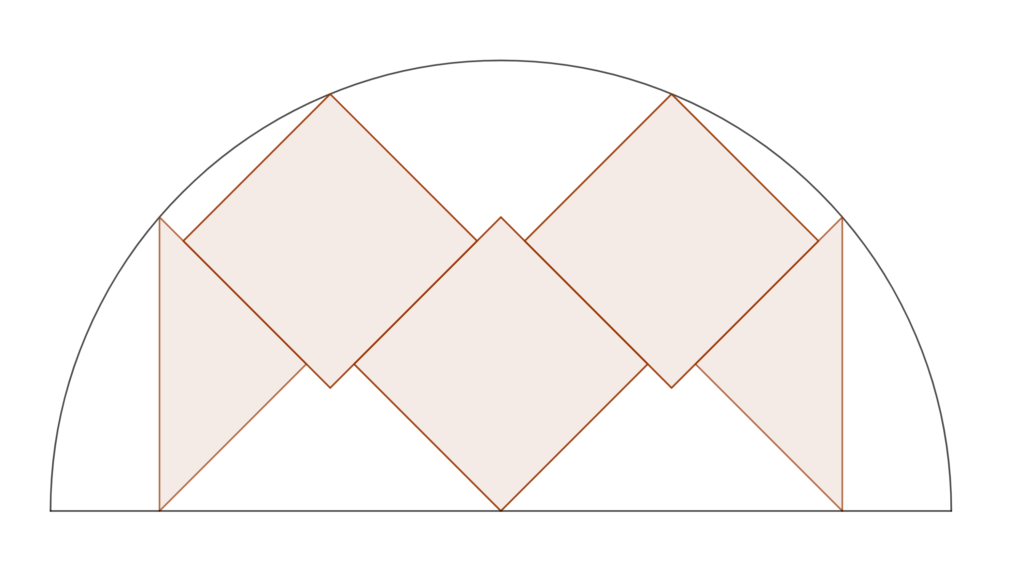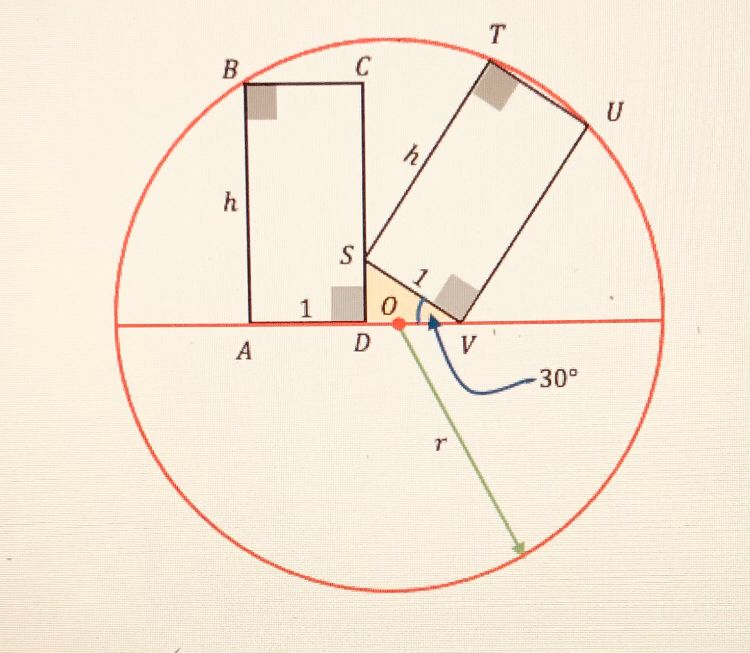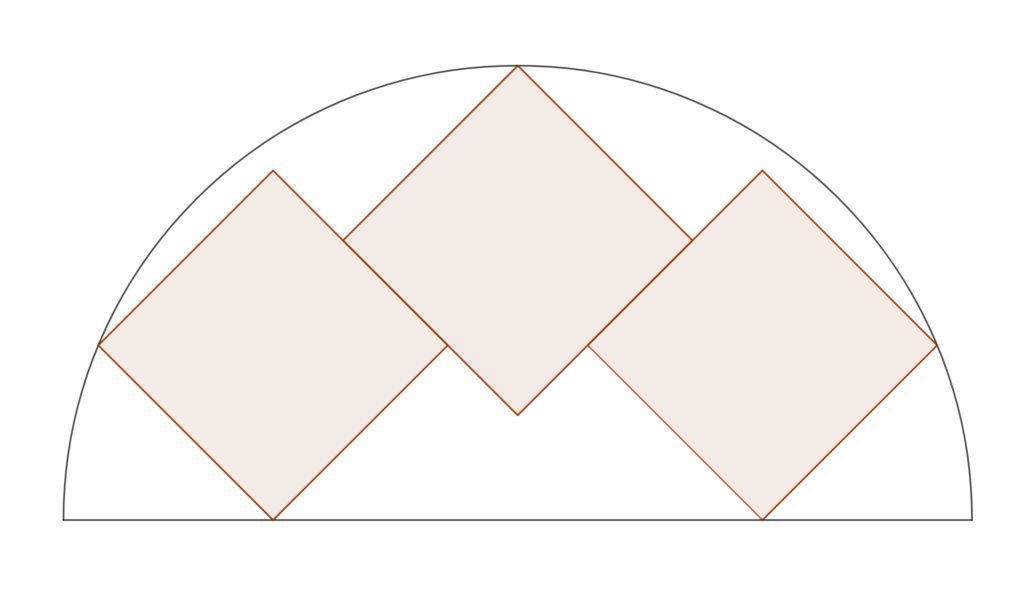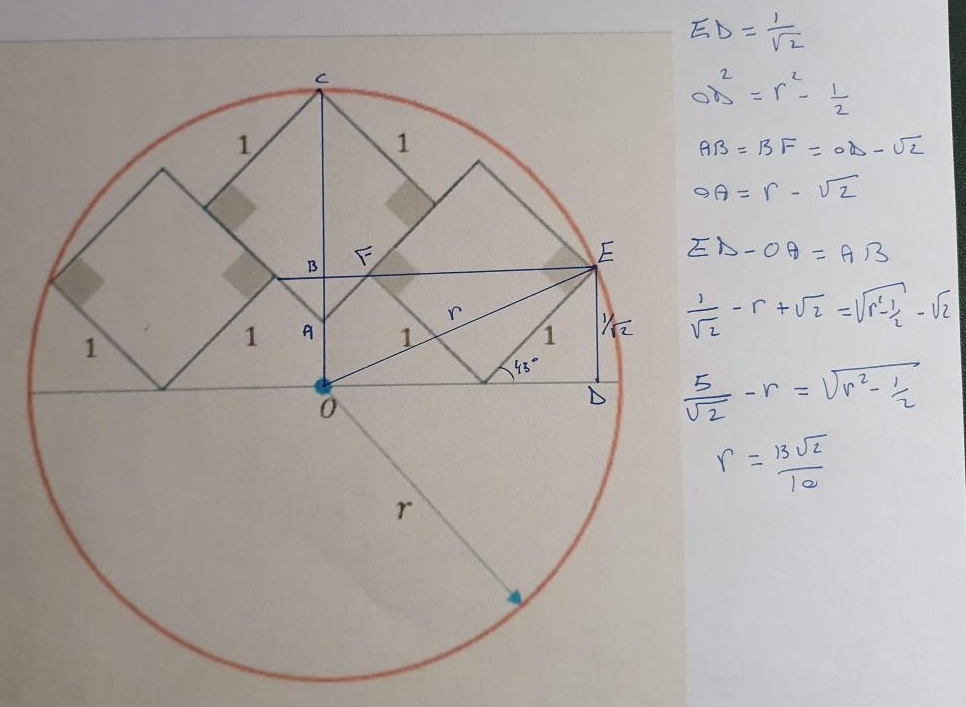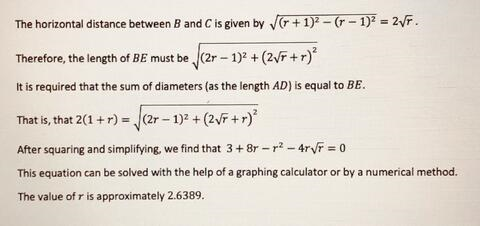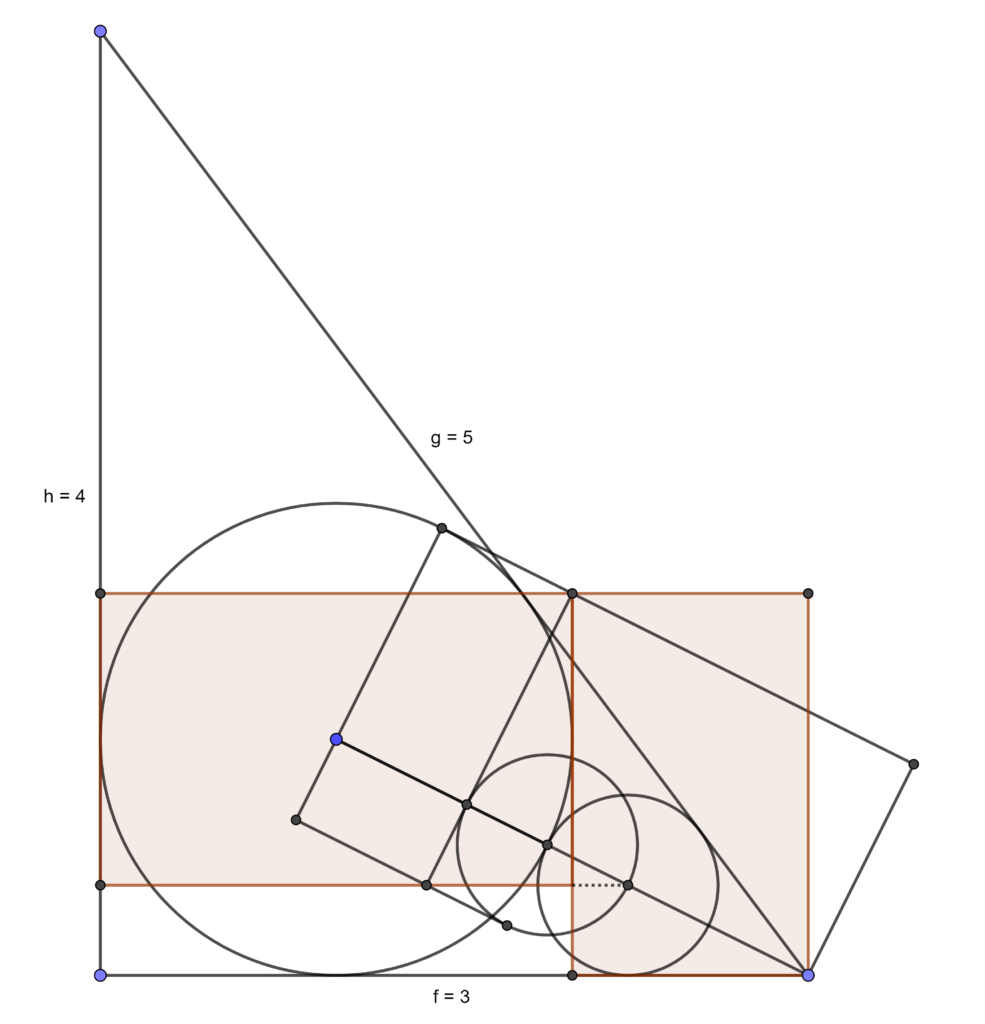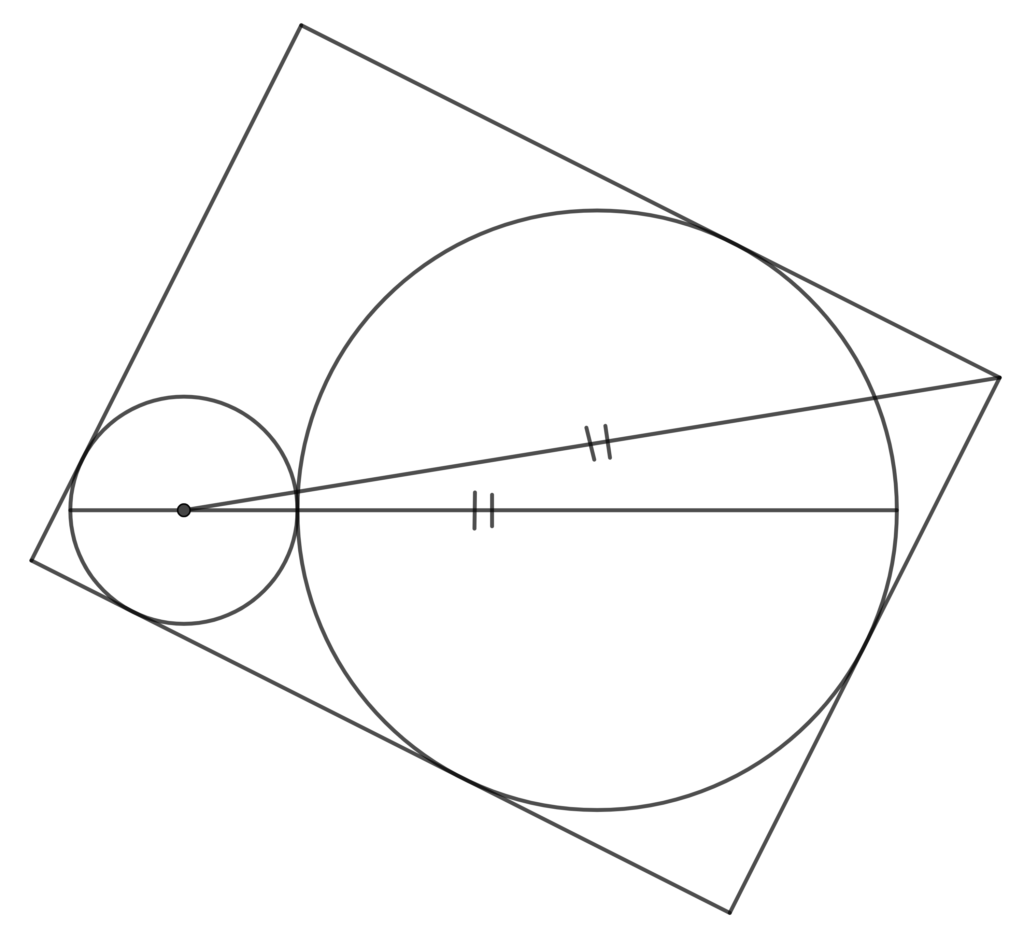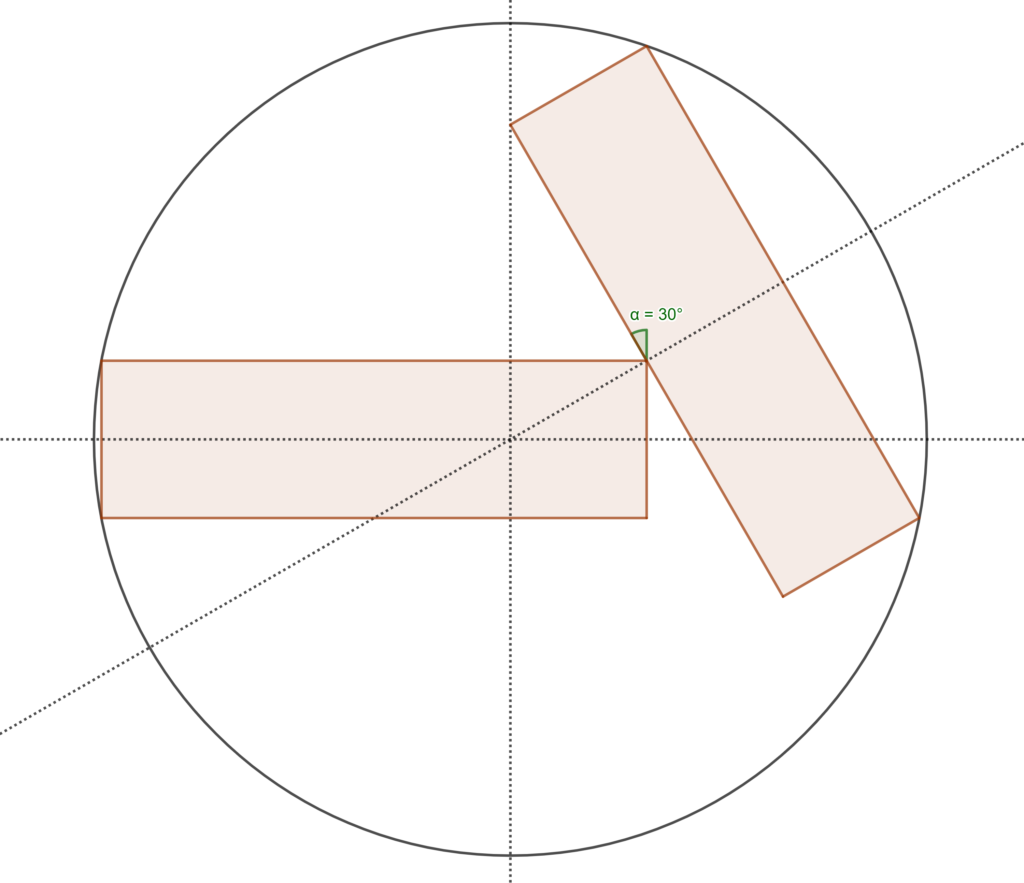
Here is a new geometry problem with two equal rectangles in a circle that you might like to try. The corner of one rectangle touches the midpoint of a side of the other. The left hand rectangle is horizontal in the diagram and the right hand rectangle is tilted 30 degrees from vertical. I created this construction using Geogebra. Ed Staples, who I collaborate with on this series of problems, made the following labelled diagram. Can you find the width 2a of the rectangles in terms of their height h, and the radius of the circle when h is 1?

